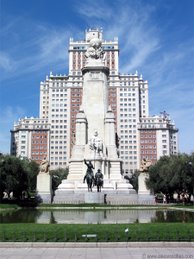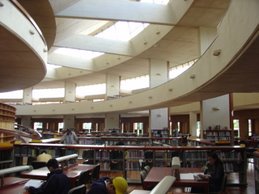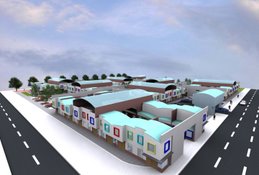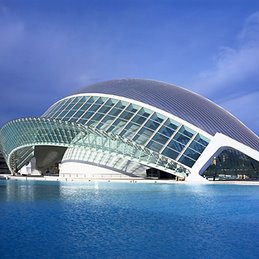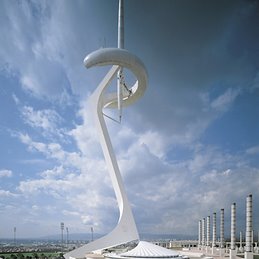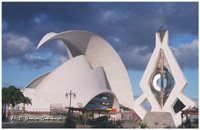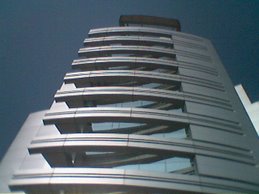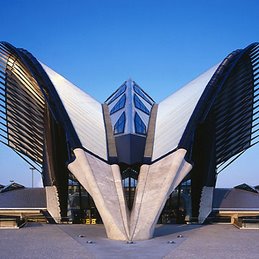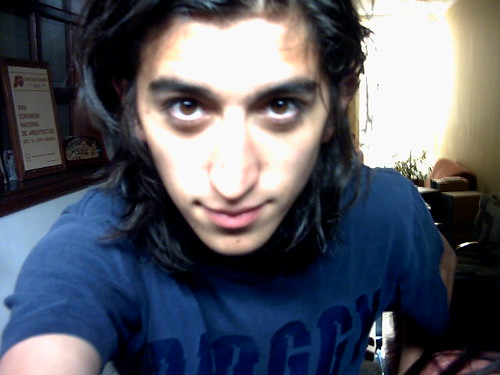A LOS QUE SE METAN EN MI BLOG LES RECOMIENDO LEER ESTE TEXTO DE LEV MANOVICH
Remixing and Remixability
The dramatic increase in quantity of information greatly speeded up by Internet has been accompanied by another fundamental development. Imagine water running down a mountain. If the quantity of water keeps continuously increasing, it will find numerous new paths and these paths will keep getting wider. Something similar is happening as the amount of information keeps growing - except these paths are also all connected to each other and they go in all directions; up, down, sideways. Here are some of these new paths which facilitate movement of information between people, listed in no particular order: SMS, forward and redirect function in email clients, mailing lists, Web links, RSS, blogs, social bookmarking, tagging, publishing (as in publishing one’s playlist on a web site), peer-to-peer networks, Web services, Firewire, Bluetooth. These paths stimulate people to draw information from all kinds of sources into their own space, remix and make it available to others, as well as to collaborate or at least play on a common information platform (Wikipedia, Flickr). Barb Dybwad introduces a nice term “collaborative remixability’” to talk about this process: “I think the most interesting aspects of Web 2.0 are new tools that explore the continuum between the personal and the social, and tools that are endowed with a certain flexibility and modularity which enables collaborative remixability — a transformative process in which the information and media we’ve organized and shared can be recombined and built on to create new forms, concepts, ideas, mashups and services.” [1]
If a traditional twentieth century model of cultural communication described movement of information in one direction from a source to a receiver, now the reception point is just a temporary station on information’s path. If we compare information or media object with a train, then each receiver can be compared to a train station. Information arrives, gets remixed with other information, and then the new package travels to other destination where the process is repeated.
We can find precedents for this “remixability” – for instance in modern electronic music where remix has become the key method since the 1980s. More generally, most human cultures developed by borrowing and reworking forms and styles from other cultures; the resulting “remixes” were to be incorporated into other cultures. Ancient Rome remixed Ancient Greece; Renaissance remixed antiquity; nineteenth century European architecture remixed many historical periods including the Renaissance; and today graphic and fashion designers remix together numerous historical and local cultural forms, from Japanese Manga to traditional Indian clothing. At first glance it may seem that this traditional cultural remixability is quite different from “vernacular” remixability made possible by the computer-based techniques described above. Clearly, a professional designer working on a poster or a professional musician working on a new mix is different from somebody who is writing a blog entry or publishing her bookmarks.
But this is a wrong view. The two kinds of remixability are part of the same continuum. For the designer and musician (to continue with the sample example) are equally affected by the same computer technologies. Design software and music composition software make the technical operation of remixing very easy; the Internet greatly increases the ease of locating and reusing material from other periods, artists, designers, and so on. Even more importantly, since every company and freelance professionals in all cultural fields, from motion graphics to architecture to fine art, publish documentation of their projects on their Web sites, everybody can keep up with what everybody else is doing. Therefore, although the speed with which a new original architectural solution starts showing up in projects of other architects and architectural students is much slower than the speed with which an interesting blog entry gets referenced in other blogs, the difference is quantitative than qualitative. Similarly, when H&M or Gap can “reverse engineer” the latest fashion collection by a high-end design label in only a few weeks, this is part of the same new logic of speeded up cultural remixability enabled by computers. In short, a person simply copying parts of a message into the new email she is writing, and the largest media and consumer company recycling designs of other companies are doing the same thing – they practice remixability.
The remixability does not require modularity - but it greatly benefits from it. Although precedents of remixing in music can be found earlier, it was the introduction of multi-track mixers that made remixing a standard practice. With each element of a song – vocals, drums, etc. – available for separate manipulation, it became possible to ‘re-mix’ the song: change the volume of some tracks or substitute new tracks for the old ounces. According to the book DJ Culture by Ulf Poscardt, first disco remixes were made in 1972 by DJ Tom Moulton. As Poscard points out, they “Moulton sought above all a different weighting of the various soundtracks, and worked the rhythmic elements of the disco songs even more clearly and powerfully…Moulton used the various elements of the sixteen or twenty-four track master tapes and remixed them.”[2]
In most cultural fields today we have a clear-cut separation between libraries of elements designed to be sampled – stock photos, graphic backgrounds, music, software libraries – and the cultural objects that incorporate these elements. For instance, a graphic design may use photographs that the designer bought from a photo stock house. But this fact is not advertised; similarly, the fact that this design (if it is successful) will be inevitably copied and sampled by other designers is not openly acknowledged by the design field. The only fields where sampling and remixing are done openly are music and computer programming, where developers rely on software libraries in writing new software.
Will the separation between libraries of samples and “authentic” cultural works blur in the future? Will the future cultural forms be deliberately made from discrete samples designed to be copied and incorporated into other projects? It is interesting to imagine a cultural ecology where all kinds of cultural objects regardless of the medium or material are made from Lego-like building blocks. The blocks come with complete information necessary to easily copy and paste them in a new object – either by a human or machine. A block knows how to couple with other blocks – and it even can modify itself to enable such coupling. The block can also tell the designer and the user about its cultural history – the sequence of historical borrowings which led to the present form. And if original Lego (or a typical twentieth century housing project) contains only a few kinds of blocks that make all objects one can design with Lego rather similar in appearance, computers can keep track of unlimited number of different blocks. At least, they can already keep track of all the possible samples we can pick from all cultural objects available today.
The standard twentieth century notion of cultural modularity involved artists, designers or architects making finished works from the small vocabulary of elemental shapes, or other modules. The scenario I am entertaining proposes a very different kind of modularity that may appear like a contradiction in terms. It is modularity without a priori defined vocabulary. In this scenario, any well-defined part of any finished cultural object can automatically become a building block for new objects in the same medium. Parts can even ‘publish’ themselves and other cultural objects can “subscribe” to them the way you subscribe now to RSS feeds or podcasts.
When we think of modularity today, we assume that a number of objects that can be created in a modular system is limited. Indeed, if we are building these objects from a very small set of blocks, there are a limited number of ways in which these blocks can go together. (Although as the relative physical size of the blocks in relation to the finished object get smaller, the number of different objects which can be built increases: think IKEA modular bookcase versus a Lego set.) However, in my scenario modularity does not involve any reduction in the number of forms that can be created. On the contrary, if the blocks themselves are created using one of many already developed computer designed methods (such as parametric design), every time they are used again they can modify themselves automatically to assure that they look different. In other words, if pre-computer modularity leads to repetition and reduction, post-computer modularity can produce unlimited diversity.
I think that such “real-time” or “on-demand” modularity can only be imagined today after online stores such as Amazon, blog indexing services such as Technorati, and architectural projects such as Yokohama International Port Terminal by Foreign Office Architects and Walt Disney Concert Hall in Los Angeles by Frank Gehry visibly demonstrated that we can develop hardware and software to coordinate massive numbers of cultural objects and their building blocks: books, bog entries, construction parts. But whether we will ever have such a cultural ecology is not important. We often look at the present by placing it within long historical trajectories. But I believe that we can also productively use a different, complementary method. We can imagine what will happen if the contemporary techno-cultural conditions which are already firmly established are pushed to their logical limit. In other words, rather than placing the present in the context of the past, we can look at it in the context of a logically possible future. This “look from the future” approach may illuminate the present in a way not possible if we only “look from the past.” The sketch of logically possible cultural ecology I just made is a little experiment in this method: futurology or science fiction as a method of contemporary cultural analysis.
So what else can we see today if we will look at it from this logically possible future of complete remixability and universal modularity? If my scenario sketched above looks like a “cultural science fiction,” consider the process that is already happening on the one end of remixability continuum. Although strictly speaking it does not involve increasing modularity to help remixability, ultimately its logic is the same: helping cultural bits move around more easily. I am talking about a move in Internet culture today from intricately packaged and highly designed “information objects” which are hard to take apart – such as web sites made in Flash – to “strait” information: ASCII text files, feeds of RSS feeds, blog entries, SMS messages. As Richard MacManus and Joshua Porter put it, “Enter Web 2.0, a vision of the Web in which information is broken up into “microcontent” units that can be distributed over dozens of domains. The Web of documents has morphed into a Web of data. We are no longer just looking to the same old sources for information. Now we’re looking to a new set of tools to aggregate and remix microcontent in new and useful ways.”[3] And it is much easier to “aggregate and remix microcontent” if it is not locked by a design. Strait ASCII file, a JPEG, a map, a sound or video file can move around the Web and enter into user-defined remixes such as a set of RSS feeds; cultural objects where the parts are locked together (such as Flash interface) cant. In short, in the era of Web 2.0, “information wants to be ASCII.”[4]
If we approach the present from the perspective of a potential future of “ultimate modularity / remixability,” we can see other incremental steps towards this future which are already occurring. For instance, Orange (an animation studio n Amsterdam) has setup a team of artists and developers around the world to collaborate on an animated short film; the studio plans to release all of their production files, 3D models, textures, and animation as Creative Commons open content on a extended edition DVD.
Creative Commons offers a special set of Sampling Licenses which “let artists and authors invite other people to use a part of their work and make it new.”[5] Flickr offers multiple tools to combine multiple photos (not broken into parts – at least so far) together: tags, sets, groups, Organizr. Flickr interface thus position each photo within multiple “mixes.” Flickr also offers “notes” which allows the users to assign short notes to individual parts of a photograph. To add a note to a photo posted on Flickr, you draw a rectangle on any part of the phone and then attach some text to it. A number of notes can be attached to the same photo. I read this feature as another a sign of modularity/remixability mentality, as it encourages users to mentally break a photo into separate parts. In other words, “notes” break a single media object – a photograph – into blocks.
In a similar fashion, the common interface of DVDs breaks a film into chapters. Media players such as iPod and online media stores such as iTunes break music CDs into separate tracks – making a track into a new basic unit of musical culture. In all these examples, what was previously a single coherent cultural object is broken into separate blocks that can be accessed individually. In other words, if “information wants to be ASCII,” “contents wants to be granular.” And culture as a whole? Culture has always been about remixability – but now this remixability is available to all participants of Internet culture.
Since the introduction of first Kodak camera, “users” had tools to create massive amounts of vernacular media. Later they were given amateur film cameras, tape recorders, video recorders...But the fact that people had access to "tools of media production" for as long as the professional media creators until recently did not seem to play a big role: the amateur’ and professional’ media pools did not mix. Professional photographs traveled between photographer’s darkroom and newspaper editor; private pictures of a wedding traveled between members of the family. But the emergence of multiple and interlinked paths which encourage media objects to easily travel between web sites, recording and display devices, hard drives, and people changes things. Remixability becomes practically a built-in feature of digital networked media universe. In a nutshell, what maybe more important than the introduction of a video iPod, a consumer HD camera, Flickr, or yet another exiting new device or service is how easy it is for media objects to travel between all these devices and services - which now all become just temporary stations in media’s Brownian motion.























